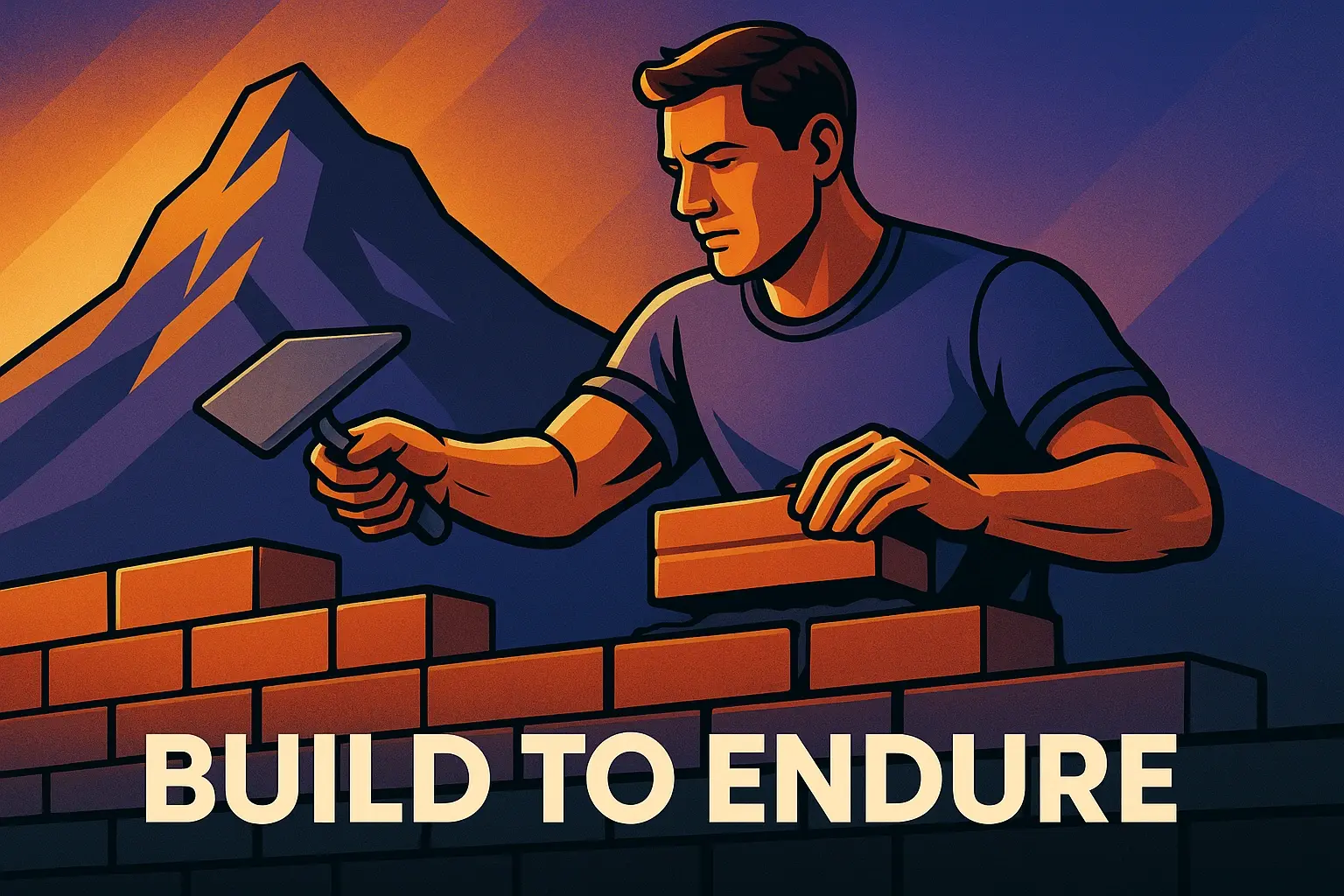
Built to Last: Successful Habits of Visionary Companies
By Jim Collins and Jerry I. Porras
Published October 12, 2025
Drawing on a six‑year research project, Jim Collins and Jerry Porras compare visionary companies to their close rivals and isolate behaviors that make firms endure. Visionary companies preserve a clear core ideology while stimulating progress through bold goals, relentless experimentation, and disciplined systems. They don’t depend on one heroic leader or single great product. Instead, they build cultures and mechanisms that compound over decades. This summary distills the key ideas and shows how to apply them to teams, projects, and personal work.
Key Lesson
Enduring success comes from systems and values that survive leaders—preserve your core and keep stimulating progress.
Build to Endure
Book Snapshot
ISBN
9780060516406
ASIN
0060566108
Topics & Search Phrases

Full Summary
Built to Last asks a deceptively simple question: what separates companies that thrive for decades from those that flash and fade? Jim Collins and Jerry Porras don’t answer with platitudes. They spent six years comparing pairs of companies in the same industry—one that endured, one that lagged—and dug for consistent differences.
The headline is a paradox: preserve the core, stimulate progress. Visionary companies are stubborn about a small set of ideals—their purpose and values—yet endlessly flexible about strategies, products, and tactics. They encode identity in a way that survives leaders, technology waves, and fashion cycles. The core is a lighthouse: it doesn’t move with the weather. Around that stable core, they run bold experiments to discover what works next. Motion with meaning.
Collins and Porras argue that charismatic leaders and killer products are nice, but they aren’t the engine of endurance. Visionary companies build clockmakers, not time‑tellers. A time‑teller is a genius who can see the exact time when no one else can; a clockmaker builds a system that tells the time long after any one person is gone. The practical translation: design mechanisms that produce the desired behaviors without requiring constant heroics. Hire and promote to your values, bake learning loops into your product and process, and reward decisions that serve the long‑term even when the short‑term stings.
Big Hairy Audacious Goals (BHAGs) are one such mechanism. Visionary firms set goals so vivid and challenging that they demand creative leaps—become #1 in a new category, land a man on the moon, 10x reliability. BHAGs energize because they point at something concrete and scary. But BHAGs live inside discipline: values and feedback guardrails keep the bold from becoming reckless.
Another pattern is the “Genius of the AND.” Visionary companies refuse false choices: purpose and profit, high standards and compassion, stability and change. They design structures that make the AND possible. For example, they pair strong cultural indoctrination with a tolerance for productive dissent. They create a core of nonnegotiables and a frontier of experimentation. This duality lets them update methods without eroding meaning.
The research also shows that visionary firms aren’t born with perfect DNA. They “try a lot of stuff and keep what works.” The difference is that they run many low‑cost experiments, notice success quickly, and then scale hard. Failure is not a scandal; it’s tuition. What’s scandalous is failing to learn because no one wrote down the lesson or changed the process. The mechanism for learning matters more than any single bet.
Culture does heavy lifting. Visionary companies are cult‑like in the best sense: the values are explicit and lived, not slogans on a wall. They hire for fit, socialize newcomers, and prune misfits quickly—even high performers who violate the core. This consistency lowers friction; people know the rules of the game and the kind of excellence expected.
The book pushes back on a common myth: that mission statements and vision decks create vision. They don’t. Vision emerges from decisions made under pressure. The way a company spends time and money, the tradeoffs it accepts, and the people it elevates reveal the real ideology. Leaders’ job is to make those choices explicit, teach them, and build simple mechanisms that keep them alive when no one is watching.
Built to Last is not all roses. Some companies in the 1994 original edition later stumbled. Does that invalidate the ideas? Collins and Porras argue it’s the opposite: companies that forget the disciplines decay. The principles are not a vaccine; they are habits. When leadership drifts from core values, stops setting BHAGs, or lowers learning standards, the flywheel slows. Endurance is earned again and again.
For teams and individuals, the translation is powerful. Define your core (purpose and nonnegotiables). Set one audacious, vivid target that scares you a little and excites you a lot. Build mechanisms that make the right behaviors automatic—checklists, default calendar blocks, review rituals. Try small, frequent experiments and keep the winners. Hire, partner, and collaborate with people whose strengths magnify yours and whose values fit your core.
In short: don’t chase a perfect plan or a perfect leader. Build a system that can survive your mistakes and outlast your presence. Preserve the core; stimulate progress; design the clock; set the audacious direction; learn loudly. That’s how organizations—and careers—become built to last.
See also: The Infinite Game, The Hard Thing About Hard Things, Tribes: We Need You to Lead Us
Key Takeaways
- Preserve the core (purpose and values), stimulate progress everywhere else.
- Build systems (“clockmaking”) so results outlast any one leader or product.
- Use vivid BHAGs to energize progress within values and feedback guardrails.
- Embrace the Genius of the AND—purpose and profit, stability and change.
- Run many small experiments; scale what works; codify the lessons.
- Build a cult‑like, values‑consistent culture that prunes misfits quickly.